Was the 2017 Absa Cape Epic particularly brutal, or were many of the riders that started it under prepared? It’s a question that’s been raised regularly since the decision by the organisers to shorten Stage 2 from 102km to 62km due to predicted extreme heat.
By Sean Badenhorst
Photos by Dino Lloyd
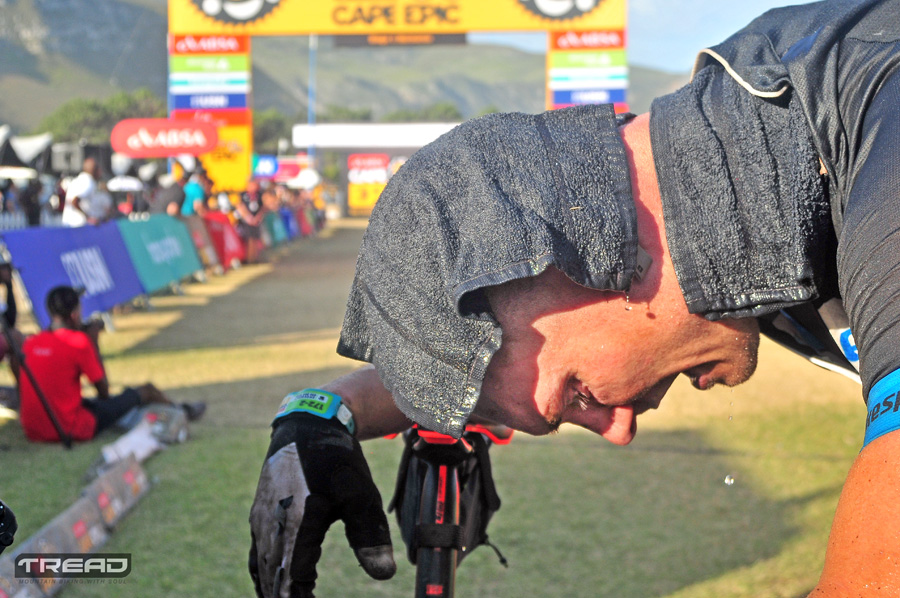
Photo: Dino Lloyd/Tread MTB
This followed the Stage 1 carnage that saw 80 teams fail to finish the 103km stage that started and finished in Hermanus. By our research of records dating back to the third event (2006), this is the highest number of team DNFs in any Cape Epic stage and 12% of the total number of teams that started (666).
It was hot that day with temperatures over 40 deg celsius recorded. It was dry and dusty too. Compounding this was a long, rough singletrack climb up Haarkapers Roete and a rugged descent down Barber’s Cut, all between Waterpoints 2 and 3, between 57km and 72km into the stage – a distance of 15km.
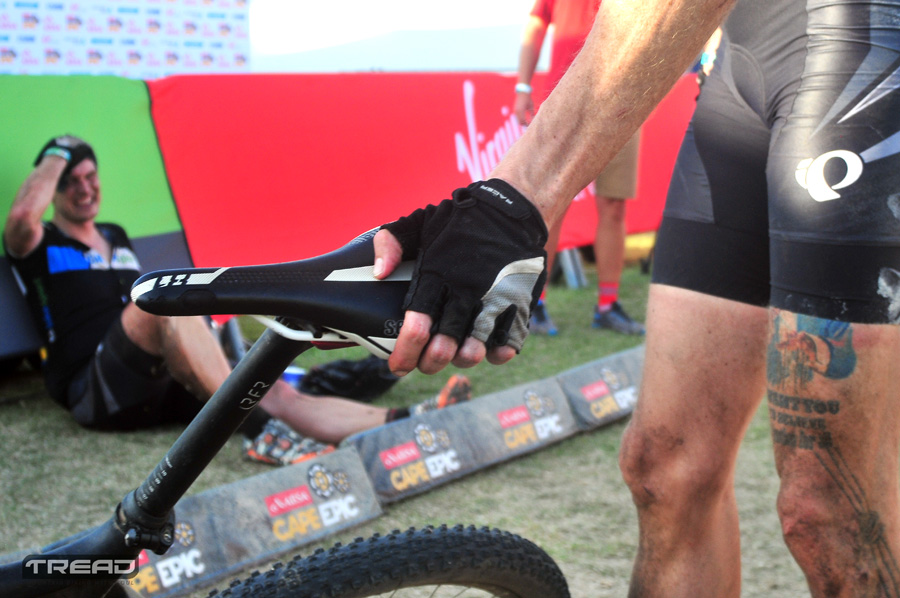
Photo: Dino Lloyd/Tread MTB
It seems that many riders struggled to ride all the way up the 3.5km climb that gained 350m in altitude. That’s steep, but it’s not unrideable – if you’re conditioned. The descent was said to be really rugged, also not unrideable.
What makes a climb like that trickier is when riders ahead of you dismount and start pushing. If you are still riding it, you have to keep shouting ahead for riders to keep clear so you can continue riding. It robs you of energy that you need every bit of to complete the climb… From our discussion with many riders at the finish that day, it seems like this climb and the subsequent descent, along with the heat, were largely responsible for the high DNF number on this stage.
It’s not unusual for the Cape Epic organisers to extend the cut-off time on a stage, but they generally only do this when the predicted time of the leaders is behind schedule. The leaders on this stage finished in the predicted scheduled time, which made it unnecessary for the organisers to extend the 9 hours 30 minutes limit.
Of course the leading riders are the best mountain bike racers in the world. They’re powerful, fit and skilled. According to the split time results, that 15km section between Waterpoint 2 and Waterpoint 3 took the leaders 44 minutes because they were able to climb the ascent relatively smoothly and ride the entire descent with reasonable confidence and speed.
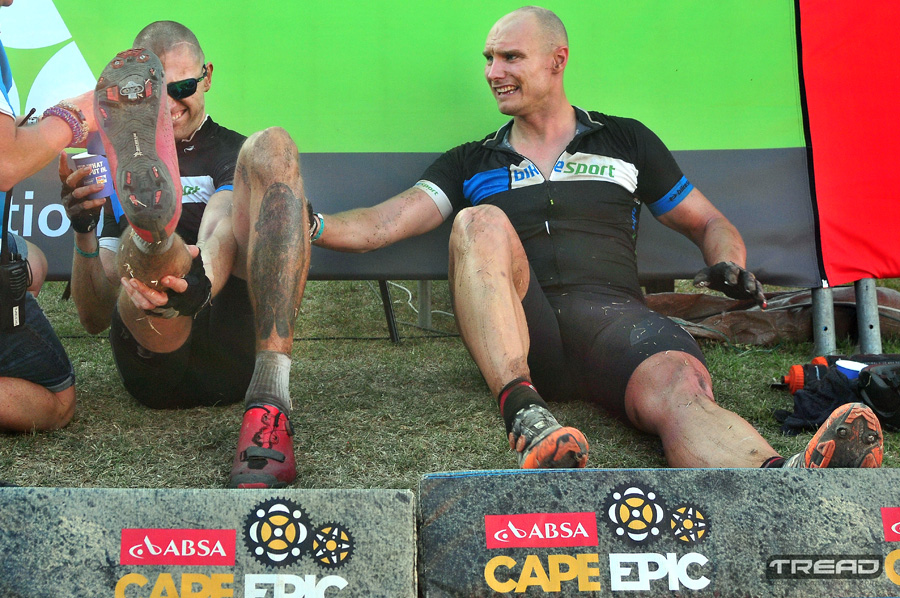
Photo by Dino Lloyd/Tread MTB
But the split times between Waterpoint 2 and Waterpoint 3 further down the field tell a story:
| Position | WP2 time | WP 3 time | Duration | Ave speed |
| 1st | 2:34 | 3:18 | 44min | 20.45kph |
| 100th | 3:12 | 4:22 | 1hr10min | 12.86kph |
| 200th | 3:33 | 4:53 | 1hr20min | 11.25kph |
| 300th | 3:48 | 5:17 | 1hr29min | 10.11kph |
| 400th | 4:05 | 5:46 | 1hr46min | 8.49kph |
| 500th | 4:25 | 6:24 | 1hr50min | 7.56kph |
| 520th | 4:29 | 6:30 | 2hr01min | 7.44kph |
| 540th | 4:33 | 6:38 | 2hr05min | 7.20kph |
| 560th | 4:38 | 6:48 | 2hr10min | 6.92kph |
| 580th | 4:56 | 7:57 | 3hr01min | 4.97kph |
| 583rd | 5:00 | 8:28 | 3hr28min | 4.33kph |
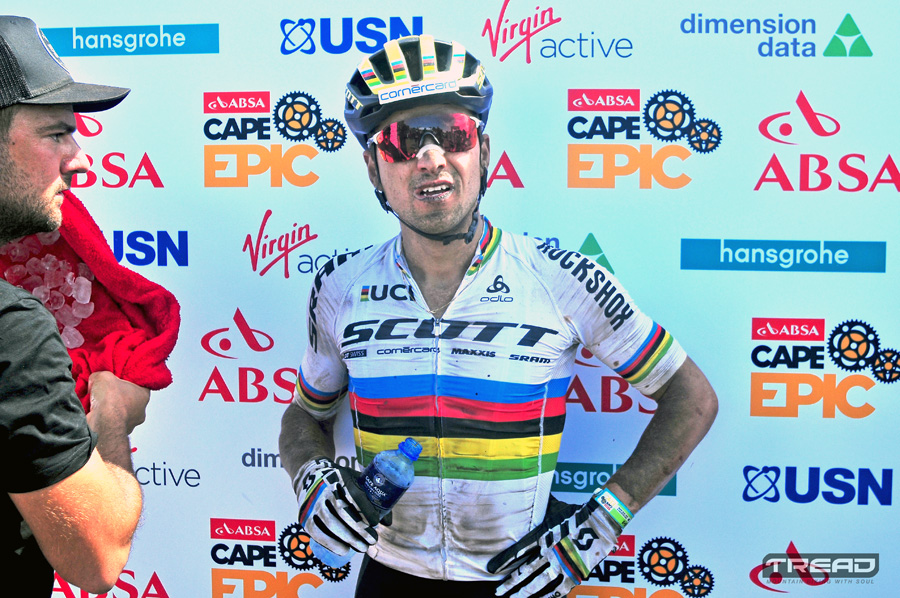
Photo: Dino Lloyd/Tread MTB
So in 15km, the difference in rider speed from the front of the race to the middle of the field to the back was remarkable. Had this been 15km of relatively undulating smooth trail, the difference would have been substantially reduced. But throw in a tough technical climb and a challenging descent, both part of mountain biking, and you have a big contributing factor to the slowed times further down the field and the high DNF rate on this stage.
By the time they’d reached Waterpoint 3, participants had completed a total of 98km of the 2017 Cape Epic. In two days. You can’t say that fatigue had set in. Most entrants cover more than that in a single long training ride during their preparation for the race. Yes, the heat would have been a factor. But it’s not like heat isn’t part of the Cape Epic.
Every review of every edition of the Cape Epic since its inception in 2004 refers to the heat, usually ‘extreme heat’. Dust is also very much a part of the Cape Epic as the race takes place in the dry season. It’s not like heat and dust are unexpected. Sure, there were scores of riders that struggled with the heat on Stage 1, but then there were hundreds of others that were just fine, even mid-to-late afternoon finishers who would have been riding through the hottest part of the day.
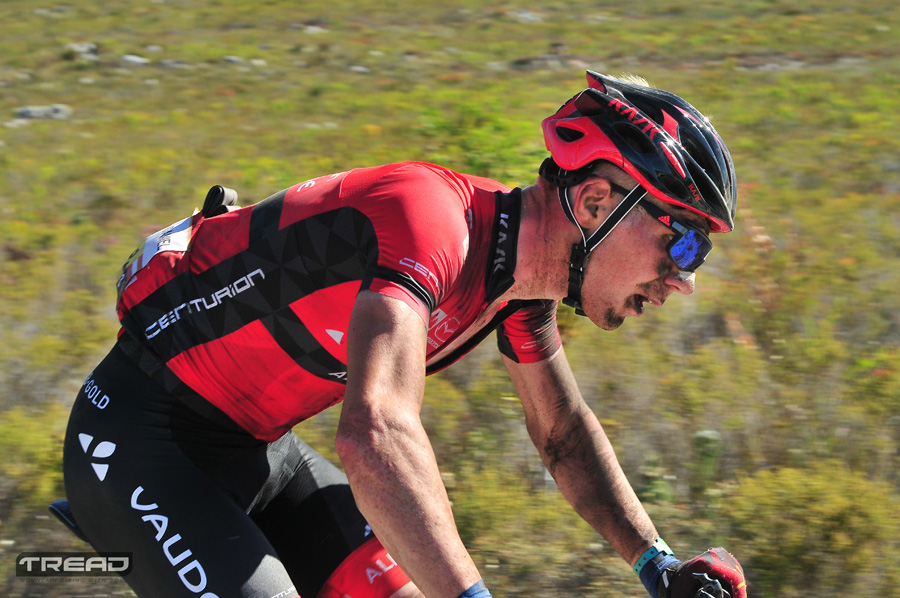
Photo: Dino Lloyd/Tread MTB
At total of 578 teams and 51 solo riders finished Stage 1 within the time limit. That’s 1207 riders that coped with the heat and the trail conditions. That’s 91.7% of the 1316 riders that started Stage 1. If that many could be adequately prepared for the conditions, then it’s not unreasonable to speculate that the route and the conditions weren’t that drastic and that those that didn’t finish Stage 1 simply were underprepared, either from a fitness/endurance perspective, or from a heat adaption perspective or from a skills perspective, or a combination of those.
But enough about Stage 1. Looking at the entire race, here’s the breakdown of each day’s teams that finished as complete teams:
| Stage | Teams that finished | Teams that DNF |
| Prologue | 658 | 8 |
| Stage 1 | 578 | 80 |
| Stage 2 | 554 | 24 |
| Stage 3 | 538 | 16 |
| Stage 4 | 523 | 15 |
| Stage 5 | 515 | 8 |
| Stage 6 | 504 | 11 |
| Stage 7 | 503 | 1 |
So a total of 503 teams finished the full eight days of racing. That’s 163 teams that did not complete their shared goal of completing the 2017 Absa Cape Epic together. That’s two fewer than last year and a total of 24.4% of the total teams that started. That figure is lower than the 25.5% team DNF rate from last year, but still higher than the 21.3% team DNF average recorded since 2006. At total of 211 riders did not finish the 2017 Cape Epic. Of those 131 were Cape Epic novices.
| Year | No. of teams that started | No. of teams that finished (% that DNF) |
| 2017 | 666 | 503 (24.4%) |
| 2016 | 648 | 483 (25.5%) |
| 2015 | 624 | 512 (18%) |
| 2014 | 620 | 522 (15.7%) |
| 2013 | 630 | 496 (21.4%) |
| 2012 | 605 | 481 (20.5%) |
| 2011 | 604 | 496 (18%) |
| 2010 | 589 | 445 (24.5%) |
| 2009 | 598 | 503 (16.1 %) |
| 2008 | 599 | 435 (27.4%) |
| 2007 | 624 | 468 (25%) |
| 2006 | 466 | 379 (19.1%) |
| Average | 606 | 477 (21.3%) |
The Cape Epic is one of just five International Cycling Union events in the world that carries SHC (Stage Hors Categorie) status. The other four are the Tour de France, Vuelta a Espana, Giro d Italia and Cyprus Sunshine Cup.
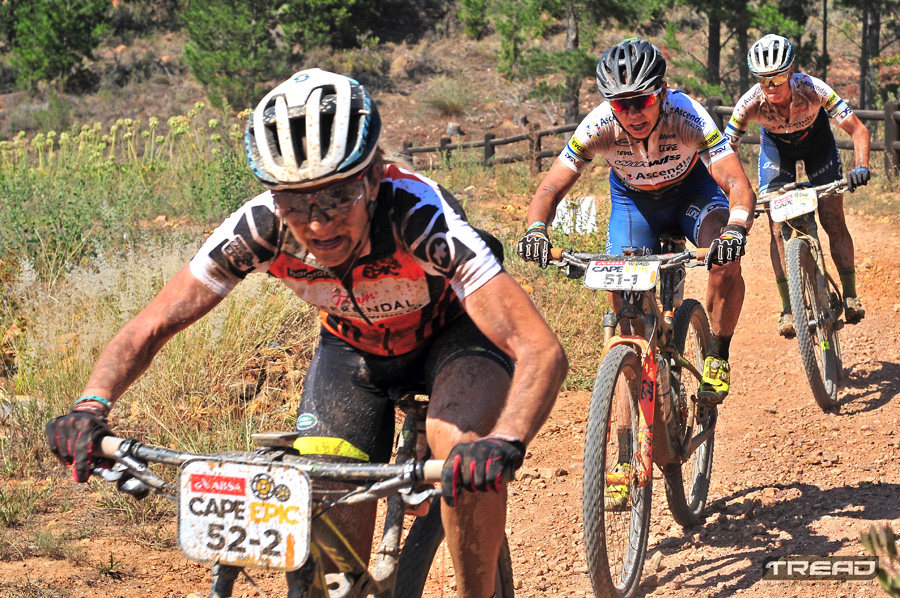
Photo: Dino Lloyd/Tread MTB
But the Cape Epic is unusual in that while it’s the most prestigious mountain bike stage race in the world, it’s also an event that’s open to amateur mountain bikers. Imagine the Tour de France allowing 1000 amateurs to enter along with the 200 pros! But the Cape Epic didn’t start out as a SHC graded race. It started as a tough two-rider-per team event over eight days. It attracted enough world-class racers to inspire the organisers to hone the event into mountain biking’s premier stage race, complete these days with the UCI’s most prized event stamp.
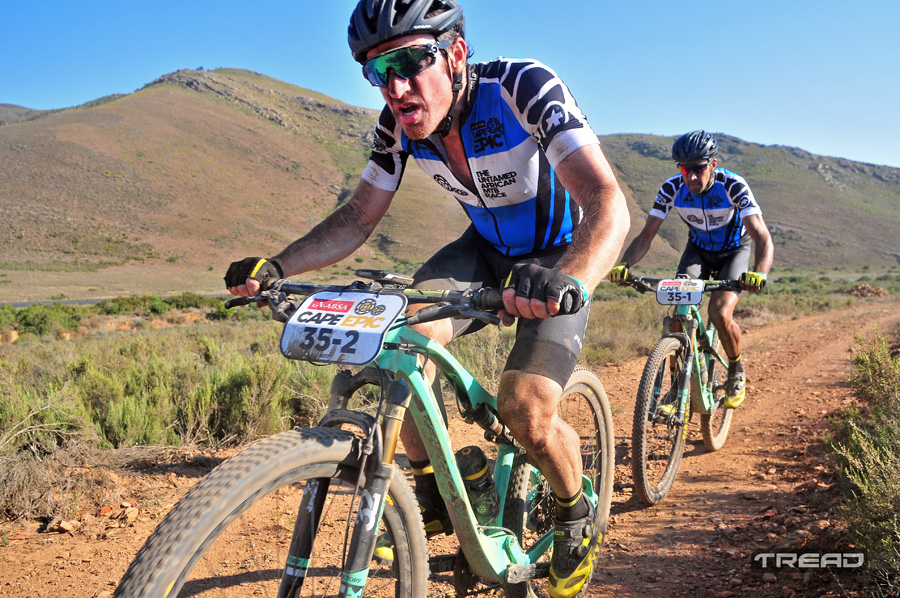
Photo: Dino Lloyd
Of course that means that the race needs to have a different route each year, offer a minimum amount of prize money and a guaranteed minimum media exposure. But then comes the dilemma. Does the Cape Epic cater for the top 70 or so men and women’s teams in the race and let the rest fit in; or does the Cape Epic cater for the majority and make it work for the top 70 professional teams?
Here’s another question: Does the race attract its significant premium brand sponsorships because of the number of riders in the event (around 1300 each year), or because of the prestige of the event?
Neither question is easy to answer. It’s just how the event has evolved. And because it’s the first event of it’s kind, it’s been the pioneer and become the benchmark by which all other mountain bike stage races are measured. The Cape Epic will always attract criticism, and as a media, we have levelled a fair bit of criticism at the event over the years, but not for the sake of it, only where we felt it was warranted.
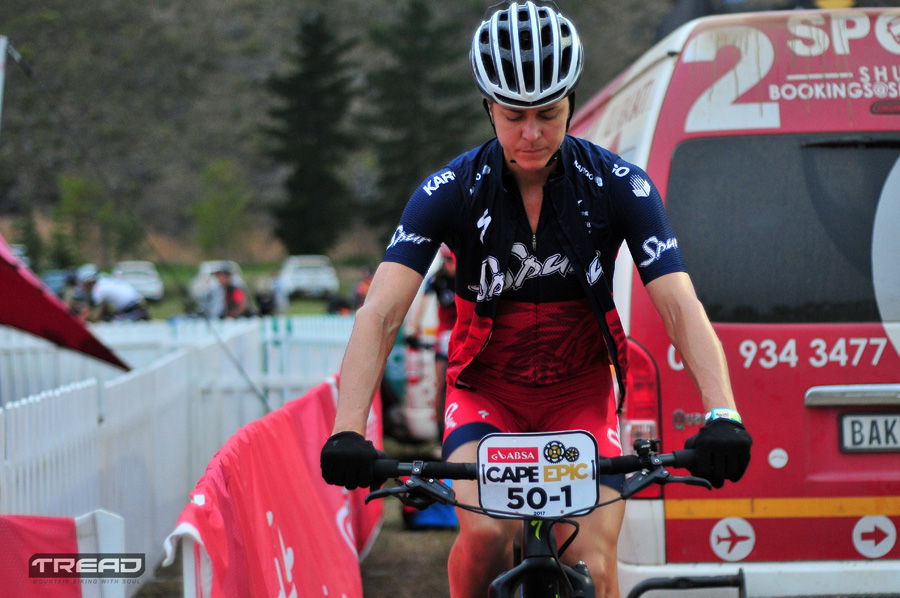
Photo by Dino Lloyd/Tread MTB
A Cape Epic team entry isn’t easy to come by. There are hundreds of committed mountain bikers each year that are disappointed at not being able to secure one. We noticed at the prologue quite a number of riders in the race that were clearly not going to finish. When a chubby rider is pushing their bike up the climb on the prologue or unable to control their bike on a simple tabletop jump, then you know that rider is way out of his depth. This isn’t a slight on the rider, it’s a slight on their lack of preparation and commitment to the event.
This is surely as a result of the increasing number of entries being secured by corporates and offered to valued clients. We could go on about this because it really shows a lack of respect for the event and what it means to have a team entry. But we won’t. We’ll choose to rather focus on the 1121 riders that finished the 2017 Cape Epic, either in a team or as a solo finisher. Because ultimately that is what counts above all else. Congrats! Be proud.
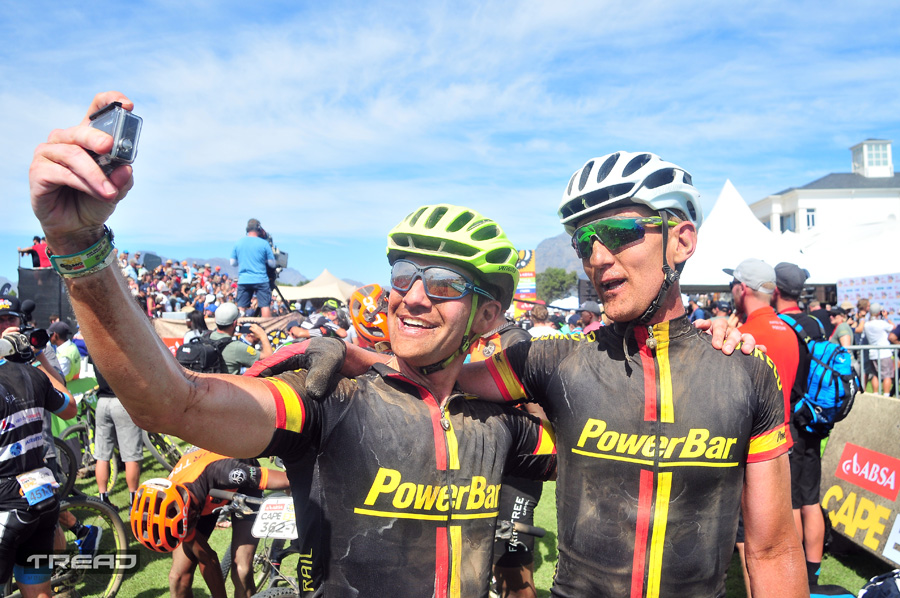
Photo by Dino Lloyd/Tread MTB
TREAD’s extensive coverage of the 2017 Absa Cape Epic, brought to you by Momsen Bikes. Follow us on twitter: @TreadMTBmag, Facebook: Tread – Mountain Biking with Soul and Instagram:@treadmtb



